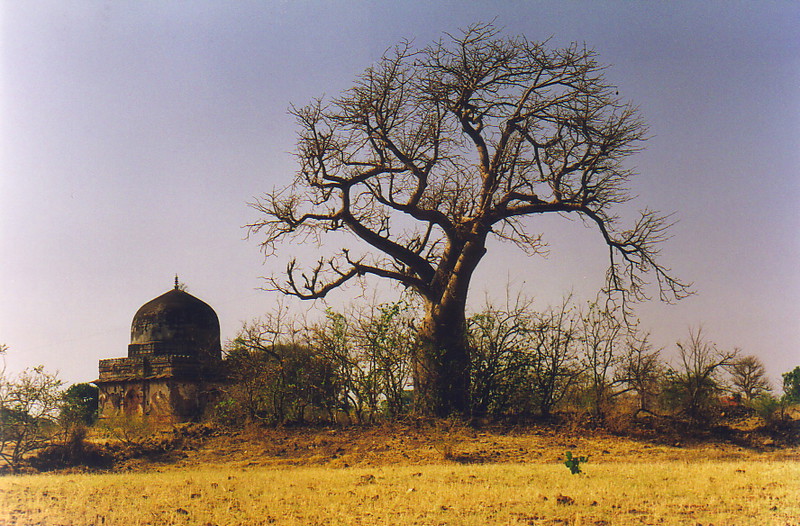
After two days of long bus journeys north from Ajanta, through dusty landscapes and the transit city of Indore, I finally arrived in Mandu. I've been getting itchy feet while exploring the hot, dusty, flat plains of central India, and I'm beginning to dream of lofty hill stations nestling at the feet of snow-capped Himalayas, but Mandu has reminded me once and for all why the arid desert areas of India are in a world of their own. Mandu is a huge fortress built by the Muslims, a combination of two of the things that make travelling worthwhile: glorious landscapes and fantastic architecture. And when I say fantastic, I really mean it; Mandu is utterly spectacular.

I simply fell in love with the place. I've said it before, but I am a total sucker for the sheer beauty of cupola-topped pavilions outlined against the pure blue sky, or the peace of domed tombs breaking the savage dryness of the dusty red scrubland. Photographs only manage to capture a part of the appeal, as the context of Mandu – perched on top of a windswept cliff in the middle of the Deccan Plains – is a vital part of the ambience of the place; Mandu is a huge, crumbling collection of crumbling buildings from the 15th and 16th centuries, sitting on top of a large, flat mountain, surrounded on all sides by steep sloping sides and rugged hairpin roads. It is steeped in atmosphere and history.

With lakes, citadels, stunning views over the plains below and a friendly local population who mysteriously insist on greeting you with 'Bye-bye' instead of 'Hello', I wandered happily for hours in the blistering heat, sheltering in cool tombs, under the arches of deteriorating mosques and in the shade of the baobabs, bottle-shaped trees1 with painfully twisted and leafless branches that look completely parched (and probably are). Despite the stiflingly hot breeze from the plains, I thrived.
Of course, there are some distinctly Indian occurrences that in the West would mar an otherwise perfect place, but here they are all part of the experience. For example, one of the more intriguing spots in Mandu is called Echo Point, so named because its position next to a steep hill creates an echo when you clap; I was unable to experience this sonic novelty, however, because right by the clapping point is a café blaring out the loudest Hindi pop music that Mandu's erratic electricity supply can churn out, which somewhat spoils the effect.

And at Rapamuti's Pavilion, a building whose simple design and amazing views summarise everything that is good about rock fortresses, I was accosted by four young Hindu dudes who insisted on taking photographs of me hugging them. They also asked if they could borrow my Australian bush hat (despite it being made from rudely slaughtered cow) and proceeded to pose with it for the camera, each in his turn and each with his own distinctive style. I had to suppress a smile as each of them thrust his groin out, hooked his thumbs into his jeans and managed an impersonation of the seventies that made John Travolta look chic.
But these small wrinkles in the fabric didn't even touch the tranquillity of Mandu. When it was time to leave for Bhopal I had to tear myself away, for Mandu is up there with Bijapur's Ibrahim Rosa, and that's really saying something.
1 The baobab trees look exactly like the boab trees of northern Australia, and this similarity is no coincidence, as the baobab and the boab are different species of the Adansonia genus.